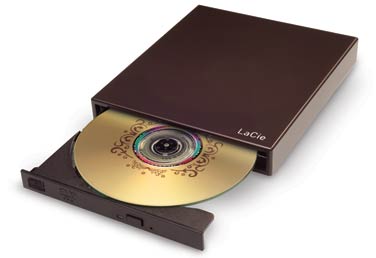

HP created this very cool and very nice "Lightscribe" technology for "burning" labels directly onto CD or DVD discs using just the DVD burner drive itself.

Hi chiefjim, and any other Lightscribe users,ġ. then, bring up QT lightscribe and "insert" your label image as your new disc label, and then just print it.īelow is a quick example of a DVD disc label using "QT Lightscribe"Īnd below that what a print preview would look like. You cannot print them in this program under Linux, because it does not recognize Linux hardware, but, you can easily export your label creation from this into an image file, like ".png". Create a desktop icon to it's main executable program, and it comes right up, and you can design and create and edit labels with this program, just like in MS WIndows.
#INSTALL LACIE LIGHTSCRIBE LABELER WINDOWS#
I also found out, that If you have the Ms Windows version of the "Lightscribe Template Labeller" program installed in your Windows Partition (or you know someone who does), then you can copy that folder with all the "templates" to your Linux "/Home" folder. * if you want to see what a print preview looks like, click "File", "print preview", then close the preview and print it.ģ. When the printing to disk is done, you will have a beautiful (albeit monochrome) labelled disc.
#INSTALL LACIE LIGHTSCRIBE LABELER FULL#
To easily print your the new label to your disc, (put the disc upside down into your DVD burner), then in QT Lightscribe click "File", then "Print", I usually use the defaults here, Full Label, always Best quality, Recognized Media, or Generic Media, click ok, and it start's the Lightscribe printing to disk. Then, I save the label and print it onto the disc. Note: I often will add an image or two, then I'll add a "round text" for a title on the top, then I add a regular text for dates and other information stuff at the bottom or sides. And, after clicking ok on this screen, you can also click to highlight a text item and easily move it around with your mouse on the label screen. Of course you can add more text items the same way. To easily add Text: select "edit", click "insert", click "Text" for regular text, or "round" text (curved text), use existing default font, or click the font button on the right and pick any font and size in your system, choose an alignment (left, center, or right), with round text you can also choose location "inner" or "outer" (try this and see).

You can also right click the image(s) on the label and bring "forward" and "backwards" to overlay images. If you want more than one image, you can go back in and insert another image, and so on. You can easily adjust placement after you hit ok in this screen on the actual label screen, you can click an image with your mouse and drag it around to wherever you want it. To easily add image(s): select "edit", click "insert", click on "image", pick an image from where ever you want, and adjust the size and or placement, if necessary. Start "QT Lightscribe", Click "File", then "new label", select "full". Steps for Creating a new DVD or CD label using QT lightscribe: ( also see video tutorial link at bottom) In "QT Lightscribe", I can easily create a new label in a minute or two (or less if only text), then the printing takes however long it usually takes. Maybe I do not understand your last comment.Ģ. I stopped using the other lightscribe programs because this was so easy to use. I have used all of the Lightscribe programs on many occasions, in Ms Windows, and Linux, and I find QT Lightscribe to be extremely easy to use with graphics, rounded text, or regular text, or any combination of them. Thank you "kyphi" for your reply, but I'm not sure that I agree with your last comment.

Qt-lightscribe is not as versatile as the LaCie or Simple Labeler versions especially given the vast image galleries available.ġ.


 0 kommentar(er)
0 kommentar(er)
